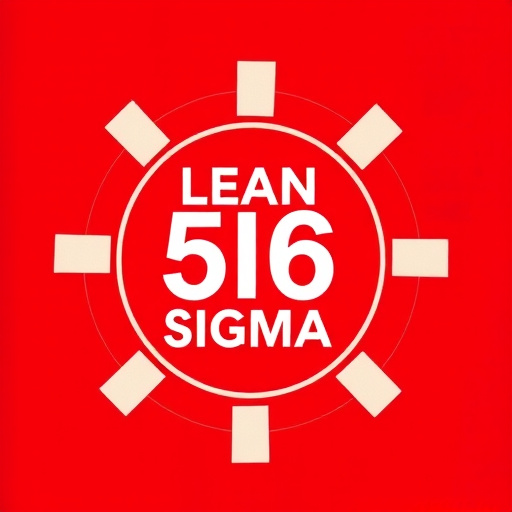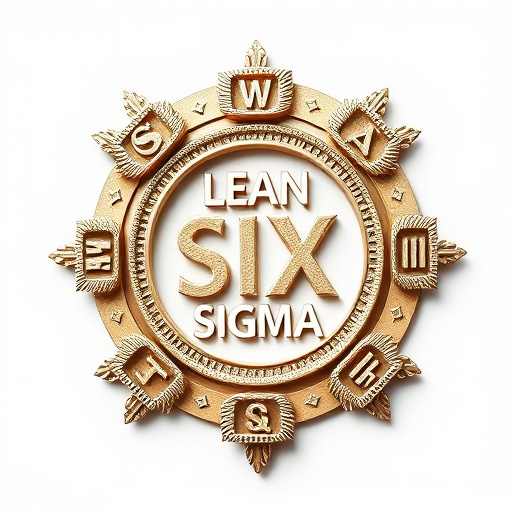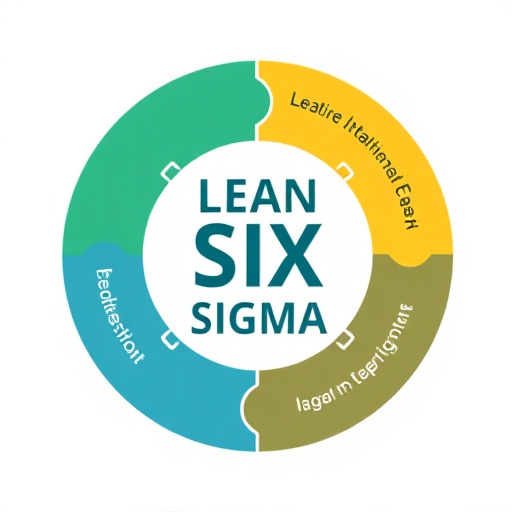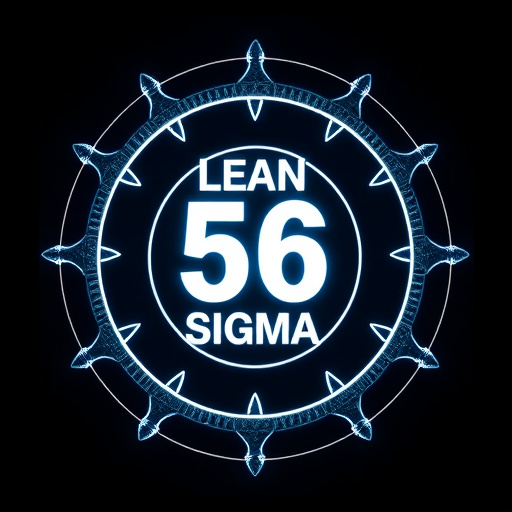Lean Six Sigma Action Item Tracking: Streamlining Success
Leveraging specialized software for efficient action item tracking is crucial in Lean Six Sigma methodologies, enabling real-time progress monitoring and data-driven decision-making. Top tools like Asana, Trello, Smartsheet, and Monday.com offer tailored functionalities for task management, collaboration, deadline setting, and advanced analytics, fostering transparency, accountability, and productivity. Seamless integration with existing systems ensures efficient workflow continuity, promoting a disciplined culture of continuous improvement through post-project analysis.
In the realm of lean six sigma, efficient action item tracking is crucial for achieving project success. This comprehensive guide explores the best tools and software designed to streamline your Six Sigma process, ensuring every task is accounted for and managed effectively. We demystify the role of technology in enhancing productivity, highlighting top project management solutions and essential features to look for in action item tracking software. Through this article, teams can navigate the labyrinthine options, making informed choices to optimize their lean six sigma initiatives.
- Understanding Lean Six Sigma and Action Items
- The Role of Software in Efficient Tracking
- Top Project Management Tools for Action Item Follow-Up
- Features to Look For in Action Item Tracking Software
- Popular Options: A Comparison for Lean Teams
- Integrating Tracking Software with Your Six Sigma Process
- Best Practices for Effective Action Item Management
Understanding Lean Six Sigma and Action Items

Lean Six Sigma is a powerful methodology that combines the principles of Lean manufacturing and statistical process control to improve business processes and reduce waste. It focuses on enhancing efficiency, quality, and customer satisfaction by identifying and eliminating non-value-added steps in processes. Central to this approach are action items, which represent specific tasks or corrective actions required to achieve project goals. These action items need to be meticulously tracked to ensure progress, accountability, and successful implementation of the Six Sigma project.
In the context of Lean Six Sigma, tracking action items is crucial for several reasons. It enables teams to monitor the status of each task, ensuring that no step is overlooked or delayed. Effective action item tracking fosters transparency, facilitates collaboration, and helps maintain the momentum of the project. By utilizing dedicated tools and software, organizations can streamline this process, enabling better control, faster resolution of issues, and ultimately, more successful Lean Six Sigma implementations.
The Role of Software in Efficient Tracking

In today’s digital era, leveraging the right software is pivotal for efficient lean six sigma action item tracking. Specialized tools streamline the process by providing real-time visibility into project progress, ensuring that every step aligns with defined goals and strategies. These platforms offer centralized hubs where teams can collaborate, assign tasks, set deadlines, and track performance metrics—all essential aspects for successful lean six sigma implementations.
Efficient tracking enables data-driven decision-making, allowing organizations to identify bottlenecks promptly and make adjustments as needed. By digitizing the tracking process, software solutions eliminate manual efforts, reduce errors, and enhance overall productivity. This streamlined approach not only saves time but also fosters better communication among team members, ultimately contributing to the success of six sigma projects.
Top Project Management Tools for Action Item Follow-Up

In the realm of lean six sigma, effective action item tracking is paramount for achieving project success. Top project management tools play a crucial role in ensuring that every task is monitored, updated, and completed on time. These platforms provide real-time visibility into project progress, allowing teams to quickly identify bottlenecks and make data-driven decisions. Many offer features like task assignments, due date tracking, and automated reminders, which help keep everyone accountable and focused.
When choosing a project management tool for action item follow-up, consider tools with intuitive user interfaces that facilitate seamless collaboration. Integrations with other lean six sigma software can also streamline workflows, enabling teams to efficiently manage projects from ideation to implementation. With the right tool in place, organizations can optimize their processes, enhance productivity, and ultimately drive better business outcomes.
Features to Look For in Action Item Tracking Software

When choosing action item tracking software for lean six sigma projects, consider tools that offer robust functionality tailored to the specific needs of this methodology. Look for features that enable clear and organized task management, allowing teams to efficiently track progress, assign responsibilities, and set deadlines. Effective software should streamline communication among project members, facilitating real-time updates and collaborative problem-solving.
Additionally, seek platforms with advanced analytics capabilities, such as data visualization tools, to help identify trends, bottlenecks, and areas for improvement within the process. Integration options with existing enterprise systems and cloud-based solutions are also essential for seamless data flow and accessibility from various locations. Features like customizable dashboards, automated reminders, and audit trails enhance transparency and ensure that every action item is accounted for throughout the six sigma project lifecycle.
Popular Options: A Comparison for Lean Teams

When it comes to tracking action items for lean six sigma projects, several popular tools and software stand out as reliable options for lean teams. A key consideration is choosing a platform that seamlessly integrates with existing project management systems, ensuring efficient workflow continuity. Among the top choices, Asana and Trello are often favored due to their intuitive interfaces and robust collaboration features. Asana’s structured task management system allows teams to assign responsibilities, set deadlines, and monitor progress in real-time, making it ideal for complex projects with multiple stakeholders. Trello, on the other hand, offers a flexible kanban-style board that visualizes tasks and their status, facilitating quick updates and adjustments during project execution.
Another notable mention is Smartsheet, which combines the best aspects of spreadsheets and project management software. It provides customizable sheets for action item tracking, enabling teams to create detailed plans, set milestones, and link tasks across different projects. Smartsheet’s real-time collaboration capabilities ensure everyone involved stays aligned, making it particularly useful for lean teams working on cross-functional initiatives. Additionally, Monday.com has gained popularity for its customizable workflows and visual project boards, allowing teams to adapt quickly to changing requirements. This platform excels in providing a centralized hub for action item management, status updates, and communication within the team.
Integrating Tracking Software with Your Six Sigma Process

When implementing lean six sigma methodologies, seamlessly integrating tracking software is key to achieving project success. These tools act as a central hub, streamlining data collection and facilitating efficient progress monitoring. By aligning your software with defined process steps, you ensure that every action item is captured, assigned, and updated in real-time. This not only enhances transparency but also enables quick identification of bottlenecks and areas requiring improvement.
Selecting the right software allows for a structured approach to project management. It provides a centralized platform where teams can collaborate, set deadlines, and track performance metrics. This integration promotes a disciplined lean six sigma culture, ensuring every member of the team is accountable for their tasks and contributing to the overall goal of process optimization.
Best Practices for Effective Action Item Management

Effective action item management is a cornerstone of successful lean six sigma projects. To ensure maximum impact, prioritize clarity and structure. Begin by defining each action item with precision, outlining specific tasks, responsible parties, and deadlines. This transparency fosters accountability, enabling project teams to track progress seamlessly. Regularly review and update the list, reflecting changes in scope or priorities.
Encourage open communication among team members to ensure everyone is aligned on action items. Utilize collaborative platforms for real-time updates, enabling easy access and visibility. Regular status checks and progress reports further enhance transparency, allowing for prompt addressing of any bottlenecks. Embrace a culture of continuous improvement by analyzing completed action items for lessons learned, thereby refining future processes.
In conclusion, implementing the right tools and software for action item tracking in Lean Six Sigma projects is key to enhancing efficiency, ensuring follow-up, and promoting successful process improvement. By choosing the appropriate project management platforms with specific features tailored to action items, teams can streamline their workflow, prevent tasks from falling through the cracks, and ultimately drive better business outcomes.